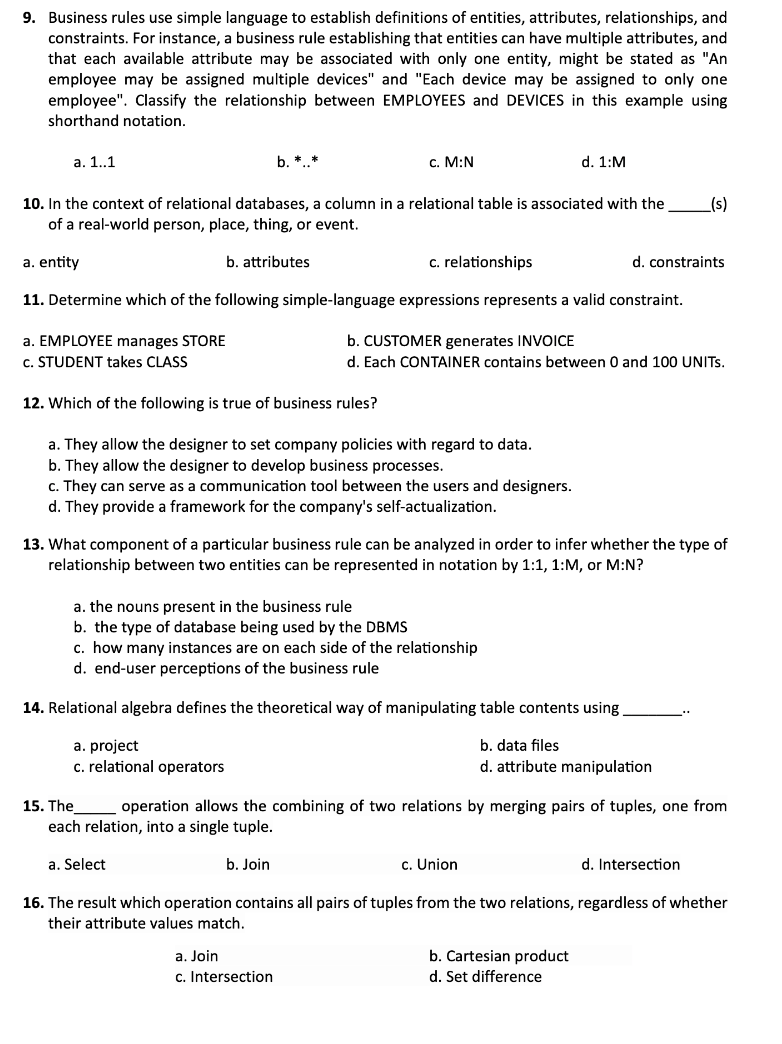
9. Business rules use simple language to establish definitions of entities, attributes, relationships, and constraints. For instance, a business rule establishing that entities can have multiple attributes, and that each available attribute may be associated with only one entity, might be stated as "An employee may be assigned multiple devices" and "Each device may be assigned to only one employee". Classify the relationship between EMPLOYEES and DEVICES in this example using shorthand notation. a. 1..1 b. .. c. M:N d. 1:M 10. In the context of relational databases, a column in a relational table is associated with the (s) of a real-world person, place, thing, or event. a. entity b. attributes c. relationships d. constraints 11. Determine which of the following simple-language expressions represents a valid constraint. a. EMPLOYEE manages STORE b. CUSTOMER generates INVOICE c. STUDENT takes CLASS d. Each CONTAINER contains between 0 and 100 UNITs. 12. Which of the following is true of business rules? a. They allow the designer to set company policies with regard to data. b. They allow the designer to develop business processes. c. They can serve as a communication tool between the users and designers. d. They provide a framework for the company's self-actualization. 13. What component of a particular business rule can be analyzed in order to infer whether the type of relationship between two entities can be represented in notation by 1:1, 1:M, or M:N ? a. the nouns present in the business rule b. the type of database being used by the DBMS c. how many instances are on each side of the relationship d. end-user perceptions of the business rule 14. Relational algebra defines the theoretical way of manipulating table contents using a. project b. data files c. relational operators d. attribute manipulation 15. The operation allows the combining of two relations by merging pairs of tuples, one from each relation, into a single tuple. a. Select b. Join c. Union d. Intersection 16. The result which operation contains all pairs of tuples from the two relations, regardless of whether their attribute values match. a. Join b. Cartesian product c. Intersection d. Set difference







